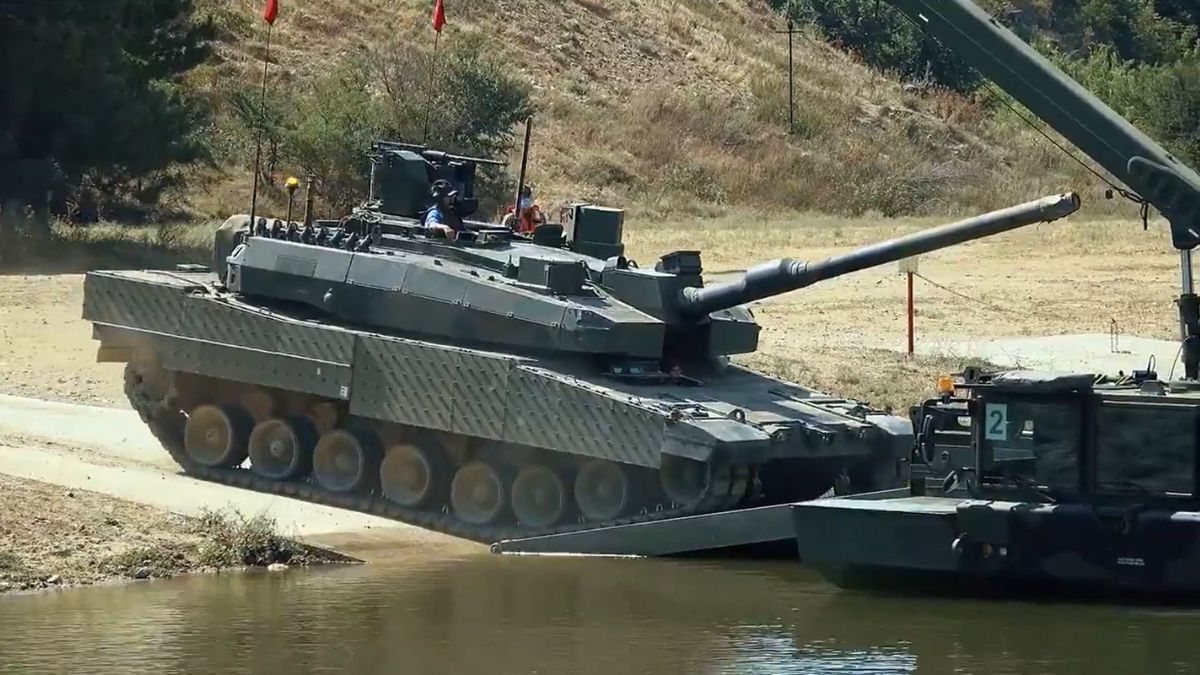
Qatar, located in the heart of the Middle East, has established a formidable armoured force. Despite its small size, this influential nation has made strategic investments in a diverse range of battle tanks and infantry fighting vehicles, all of which contribute to its robust defence capabilities. Among these, five stand out for their advanced technology, firepower, and strategic importance: the Altay, Leopard 2 A7+, AMX-30, AMX-10P, and AMX-VCI. These machines, originating from Turkey, Germany, and France, not only represent Qatar’s military might but also its diplomatic ties and shifting alliances.
Qatar’s Top 5 Tanks
In 2011, Turkey introduced its first main battle tank, The Altay, at a defence show in Istanbul. The tank is named after Army Gen. Fahrettin Altay, who led the Fifth Cavalry Corps during the Turkish War of Independence. The Altay is equipped with advanced features such as a 120mm 55 calibre smoothbore gun, a next-generation fire control system, and a target acquisition system that uses thermal vision. It also boasts a 360-degree awareness and laser defence system called the PULAT, a 12.7 mm heavy remote-controlled machine gun turret, and a 7.62 mm machine gun. Recently, Qatar purchased 100 Altay tanks from Turkey, with the first phase of procurement including up to 40 tanks.
The Leopard 2 A7+ is a cutting-edge German main battle tank that incorporates advanced digitised technology and a versatile user concept to enhance its sustainability. It boasts a Rheinmetall 120mm L/55 smoothbore gun, a state-of-the-art computerised fire control system, an upgraded armour package, an efficient air-conditioning system, and a roof-mounted FLW 200 remote weapon station armed with a .50 M2 HB machine gun. Powering this formidable tank is the MTU MB 873 diesel engine, which generates an impressive 1,500hp. In 2013, Qatar made a significant order of 62 Leopard 2 A7+ tanks from KMW, to replace their existing fleet of 30-40 French AMX-30 medium tanks. The first batch of Leopard 2A7+ tanks was successfully delivered to Qatar in 2016.
The AMX-30, developed by Ateliers de construction d’Issy-les-Moulineaux (AMX, later known as GIAT), was introduced to the French Army in August 1966. This main battle tank featured a 105 mm gun that fired the Obus G, a high-explosive anti-tank (HEAT) warhead, and was powered by a 720 horsepower HS-110 diesel engine. Qatar initially had 30-44 of these tanks in active service, which were initially equipped with British weaponry. However, in response to France’s efforts to strengthen bilateral ties, Qatar gradually shifted its procurement to French-made equipment during the 1980s. Consequently, the tank battalion transitioned from the French-built AMX-30 main battle tanks to the German Leopard 2A7s.
The AMX-10P, an amphibious infantry fighting vehicle, was developed by Atelier de Construction d’Issy-les-Moulineaux (AMX) in France to replace the AMX-VCI in the French Army. Production of this vehicle began in 1972-1973 after the completion of the prototypes in 1968. It is armed with a 20 mm F2/M693 autocannon and a 7.62 mm MAS coaxial machine gun. The power is derived from the Hispano-Suiza Model 115-2 eight-cylinder liquid-cooled diesel engine, generating 205 kW (275 hp) at 3,000 rpm. In 1975, Qatar opted for 30 AMX-10Ps as part of its procurement strategy shift, favouring French weaponry over British ones due to France’s efforts to strengthen bilateral ties. These AMX-10Ps served in the Qatari military until they were eventually replaced by the German Leopard 2A7s.
The AMX-VCI, which stands for Véhicule de Combat d’Infanterie, is a variation of the AMX-13 light tank from France. It was manufactured from 1972 to 1973 and comes with a 20 mm F2/M693 autocannon and a 7.62 mm MAS coaxial machine gun. The vehicle is powered by an eight-cylinder liquid-cooled diesel engine, the Hispano-Suiza Model 8Gxb, which can produce 205 kW (275 hp) at 3,000 rpm. Qatar has 30 of these vehicles in operation, acquired as part of a larger shift in the 1980s from British to French weaponry in response to France’s efforts to establish closer ties.
